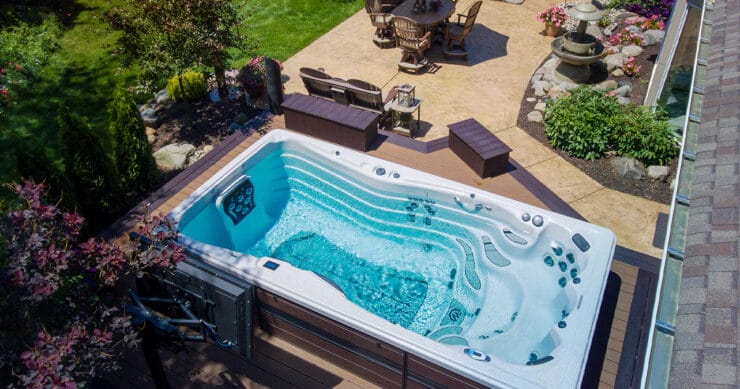You tell yourself that you are just getting older. Getting out of bed in the morning, you find yourself walking a bit hunched over. Your low back feels tight, sometimes even a bit uncomfortable. But that tightness and achiness doesn’t always go away as you move throughout your day.
Most Americans will experience some kind of back pain during their life. According to the Mayo Clinic, you are more likely to experience back pain as you age — with it starting between the ages of 30 or 40.
However, age is not the only reason that your back hurts. Poor posture can lead to pain in your neck, shoulders, upper back, and lower back. It can also cause headaches and “knots.”
Whether it’s too many hours at a desk or walking hunched over, many of us need to straighten up. Improving your posture, though, might take more than just standing up tall. Exercise and weight loss can play important roles in improving your posture.
But exercising when your back already hurts? It can be hard to get motivated to hit the gym. Water aerobics is a low-impact way to strengthen your core, improve posture, and boost your overall fitness. With a Master Spas swim spa, you can exercise in the water without leaving the comfort and privacy of your backyard.
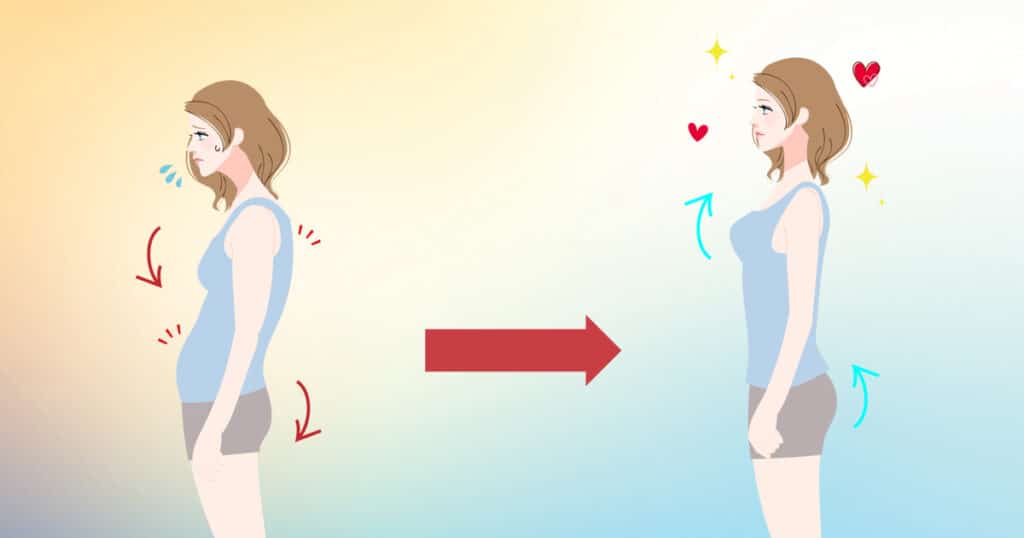
Bad posture vs good posture
Posture refers to the alignment of your body — basically how it all stacks up. Your ears should be over your shoulders, your shoulders should be pushed back. Your spine and hips should be neutral.
When it comes to bad posture vs good posture, people with good posture should be able to draw a straight line from the top of their heads through their ears, shoulders, hips and ankle. Signs of bad posture include swaying back or leaning forward, a curve in the lower spine, or rounding of the shoulders. People who have bad posture might also push their head forward, with the chin almost coming over the chest.
The causes of bad posture are typically linked to modern lifestyles. People spend more time sitting, whether it’s working on a computer or watching television. Sedentary lifestyle can also cause muscular imbalances.
If you spend too much time sitting or hunched over, your body will adapt to this bad posture. The muscles in your back can weaken and lengthen, while the muscles in the front of your torso become tight. As your back muscles weaken, you might notice that you are not strong enough to maintain good posture — even when you are being intentional.
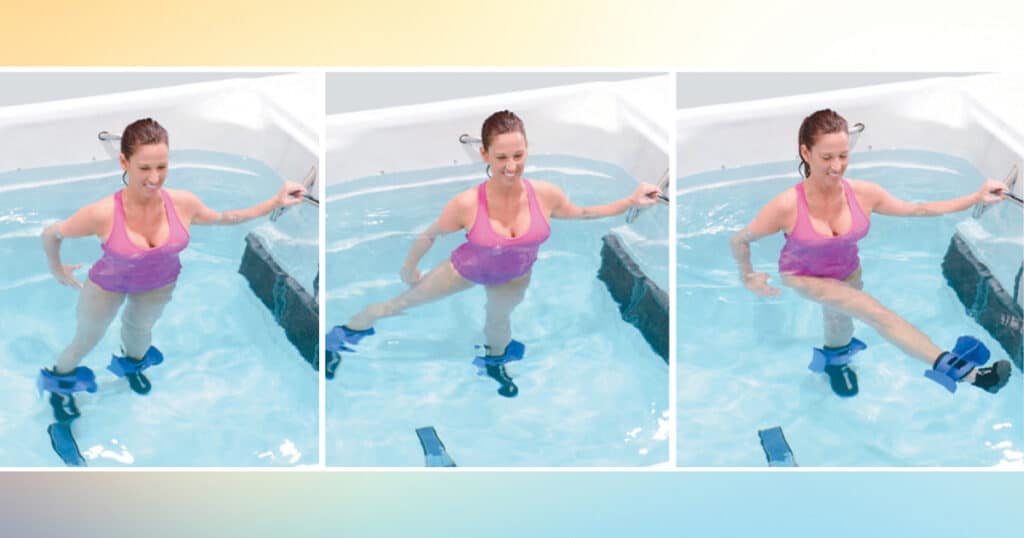
Exercises for bad posture
Do you want to get to the core of your bad posture? Well, it might be a weak core. Your core includes the muscles of your abs and back and when those are weak, you might hunch over or struggle with low back pain.
To correct bad posture, it’s important to incorporate exercises that target your upper back. Muscle groups include the rhomboids and trapezius. These muscles are key to keeping your chest lifted and shoulders back so that you can stand tall.
It will also be important to stretch the opposing muscles such as the pecs.
An article in the Journal of Physical Therapy Science reported the results of a study that examined the benefits of exercise for posture corrections and pain. Participants in the study exercised three times a week, for 20 minutes each session. The exercise program for posture correction was eight weeks long.
After the program ended, participants reported significant improvements. They had less shoulder and back pain.
Studies have also reported that exercise and stretching programs can improve head position, which is a symptom of bad posture.
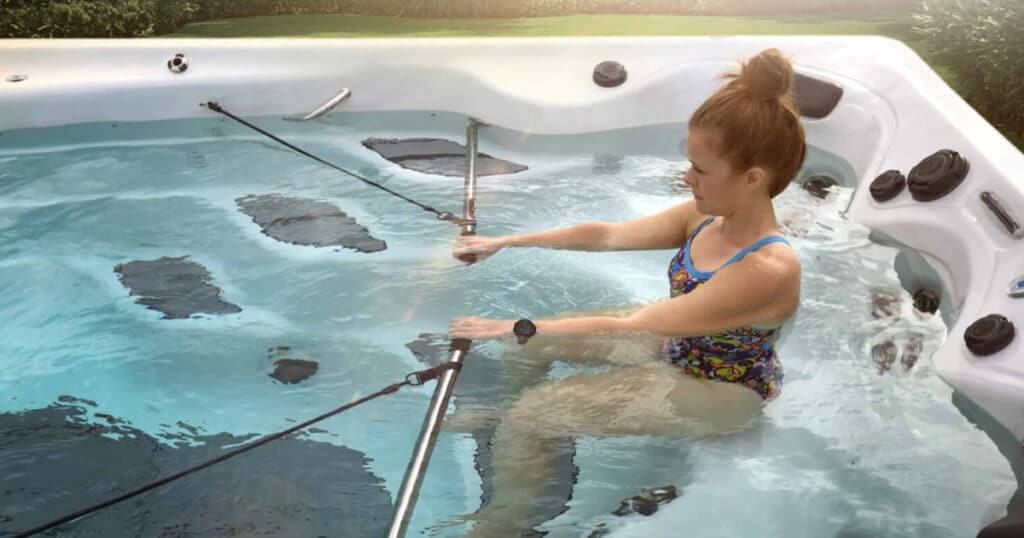
Water exercises for posture correction
Bad posture is not just a pain in the neck — or back. When you have poor posture, it can negatively affect your health.
Exercise programs for posture correction often include stretches, like cat and cow, the doorway stretch, and hip flexor stretches. In a swim spa, you can take advantage of water’s buoyancy to achieve greater mobility and better flexibility.
In addition, the natural resistance allows you to perform exercises with no equipment and still improve your strength and posture.
Hip flexor stretch
The Figure 4 stretch is a great way to ease tension in your hips and ease low back pain. You can sit on a swim spa step or stand near the side of the spa, using the wall for support. Place your left foot on your right thigh and gently press down your left thigh. If you are standing, you will want to sit your hips back into a modified squat. Hold for 30 seconds and repeat on the other side.
Water aerobics lunge
With a staggered stance, face the back of your swim spa. Place the front foot on a swim spa step. Bend your front leg and lower down into a lunge. Hold for 30 seconds and repeat on the other side.
Rowing with bars
Most Master Spas swim spas come with the H2Xercise kit featuring rowing bars. With the rowing bars installed, sit on a swim spa seat. Hold the rowing bars and slowly perform a rowing motion. Squeeze your shoulder blades together and return to the starting position. Be sure to keep your core engaged and use your arms equally.
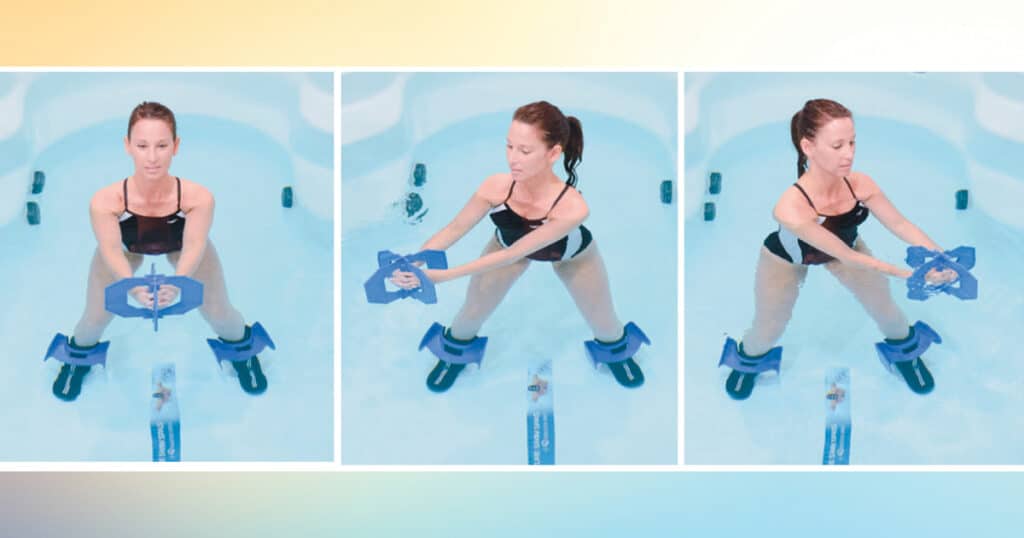
Chest fly with dumbbells
Stand in the swim area of your swim spa and straighten your arms in front of you. Hold the aquatic dumbbells so that your palms are facing each other and your thumbs are toward the sky. With a soft bend in your elbows, open your arms. Squeeze the shoulder blades. Slowly return to the start, feeling the dumbbells push against the water.
Core rotation
With both arms extended, hold a water dumbbell or ball your hands together in a fist. Slowly twist your upper body from side to side. You can make this exercise more challenging by turning on the water current of your swim spa.
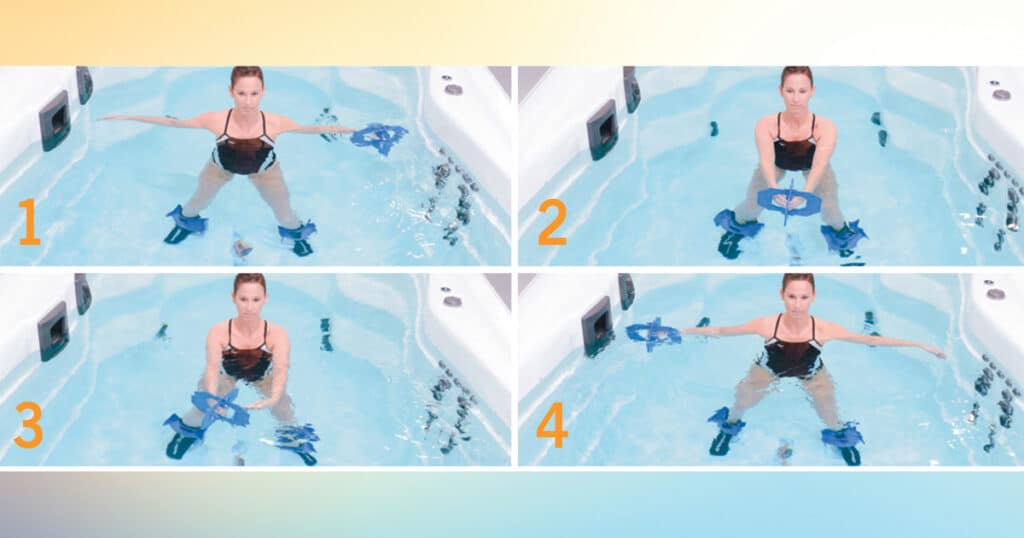
Bell passes
A variation of the core rotation, you only need one dumbbell for this exercise. With your feet shoulder width apart, extend your arms with the dumbbell in front of you. Hold the dumbbell in one hand and bring it out to your side. Bring it in front of your body and pass the bell ot the other hand. With the bell in the second hand, bring it to your side. Return to the center and continue to repeat the sequence.
Super stretch
Hold the stainless steel grab bar of the swim spa. Your arms should be straight and wider than shoulder-width apart. Kick up your legs behind you and let your legs float back. Try to get as “tall” as possible while lying in the water. You might want to wear a swim snorkel while doing this exercise so as not to put extra strain on your neck. Extend your legs out behind you, spreading them apart, so you’re floating belly-down in the water.
Scissor kick
Looking toward the sky, grab a hold of the stainless steel grab bar. Float your legs up and stretch out your body. Gently kick your legs as the water supports your low back. Be sure to keep your core engaged and to kick from the hips.


